- Home
- Tom Clancy
Battle Ready Page 18
Battle Ready Read online
Page 18
Zinni’s promotions and command experiences were great sources of pride; but his high spirits were deflated when his father passed away in 1980. He was able to see his father one last time before he lost him.
In 1981, he went back to Quantico as an instructor at the Marine Corps Command and Staff College to teach operations and tactics (and to earn a master’s degree in management and supervision). And during the 1983-84 school year, he attended the National War College.
In October 1983, while he was at the War College, the Marine barracks in Beirut was suicide-bombed by Hezbollah terrorists—a horrific event that impacted heavily on everyone in the Corps. The growing threat of terrorism not only in the Middle East, but also in Europe and Latin America, began to increasingly occupy Zinni’s interest and attention.
The disaster in Beirut put a lot of scrutiny on the Marine Corps (many asked if they were to blame for the security failures that allowed the tragedy to happen), but it also pointed up how little understood was the terrorist threat to U.S. forces abroad. Terrorist groups were becoming more active and deadly throughout the world, and U.S. military personnel were an attractive target.
In the spring of 1984, a few months before graduation, Zinni got a call from his old Vietnam battalion commander and mentor, Mick Trainor, now a lieutenant general and the deputy chief of staff for Plans, Policies, and Operations at Marine headquarters. After the War College, Zinni had been told he would be a plans officer in the Marine Corps Headquarters dealing with European and NATO issues. “That’s not going to happen,” Trainor explained. “We have other plans for you.”
“After the Beirut bombing, there’s been enormous pressure to get our act together on the terrorist threat,” he continued. “I need you to follow through on an effort we’ve started to develop a program aimed at dealing with that threat. We want to beef up our counterterrorism and security efforts and to educate the Corps into a far greater awareness of the threat we are facing; and we also want you to work on the emerging programs and issues regarding special operations.” (By this time, the Marine Corps had begun to use the term in the now commonly understood sense—as referring to all forms of unconventional warfare.)
“So you can forget about the plans officer assignment. We’re going to make you the Special Operations and Terrorism Counteraction officer at headquarters.” This sounded like exciting and interesting business to Zinni. He knew the Marine Corps had been hit hard in Beirut and was serious about dealing with this new threat of terrorism.
“Yes, sir,” Zinni replied, his brain churning. He knew how hard it was going to be to get himself up to speed on both terrorism and special operations.
Since he had not taken any of the elective courses on terrorism offered by the War College, opting instead to study Europe and NATO (since that was the area of expertise he had expected to use next), he had to scramble to pick up anything he could on the subject from literature and faculty experts. Thus armed, he reported for duty to Marine headquarters immediately after graduation.
Soon his five-man section had built a program that aimed to make every Marine aware of the new threat. It provided realistic training and education on countering it; developed the concepts, tactics, and special equipment needed to fight terrorists; improved the Corps’ intelligence capability in this area; and improved security at Marine installations.
Meanwhile, as the Marine Corps’ special operations officer at headquarters, Zinni represented the Corps in the joint arena on all matters dealing with that ever-more-important area.
A Marine sailing into these seas knew they were infested with dragons, for the Corps had long rejected special operations forces and capabilities. The aversion to special units comes from a belief that the entire Corps is “special”; it does not need elites within elites.
Ever since the disaster at Desert One (the tragically failed special operations attempt to rescue the American hostages held in revolutionary Tehran), developing a credible joint special operations capability was a top priority. In a 1983 memo from the Deputy Secretary of Defense, all the services were directed to designate special operations forces for this capability. When Zinni put on the Marine special operations hat, the Army, Navy, and Air Force had already designated their own “special” units, and the controversial issue of organizing them into a joint force was being dealt with in Washington. This action would eventually lead to the creation of the Special Operations Command, a separate unified command with its own budget authority (making it not quite a separate service). This ensured the services would evenly support their force contributions to this command.
The Marine Corps chose to ignore the directive, and, true to its long-standing policy, refused to create or designate any “special” units or capabilities.
This policy went back to the Second World War, when the Corps had created Raider Battalions at the insistence of President Roosevelt, but had quickly disbanded them and other special units.
Later, when President Kennedy attempted to persuade the Marine Corps to form special capabilities to deal with counterinsurgency missions, General David Shoup, the commandant, countered that the Marines could handle these missions as they were currently structured; they didn’t need special units. Kennedy, not impressed with Shoup’s answer, turned to the Army and supported the development of Army Special Forces.
By 1984, it was clear that the Marine Corps could no longer avoid taking on a special operations capability . . . in some form. The question was: How? In what form?
When at one point a powerful congressman actually proposed putting all the special operations forces under the Marine Corps, the Marines had to scramble desperately to make a reply. A Marine study came to the (un-surprising) conclusion that there were obvious benefits to having all the special capabilities under one service, and the Marine Corps was the ideal service for that; but taking that course would be prohibitively disruptive and create animosities and disadvantages that would outweigh the benefits.
The Marine Corps efforts to dig in their heels ended there. The growing pressure for a special capability caused the then commandant, General P. X. Kelley, and Lieutenant General Trainor to relook at developing a special capability.
As the Corps’ action officer on special operations, Zinni attended all meetings, briefings, and joint sessions on the subject; observed all training; and visited all service units with these capabilities. He soon knew special operations as well as any other Marine.
He was charged with developing the initial study, which concluded that the Marines needed some “special” capabilities, and proposed several options, including the formation of special units. Some of the “special” missions the study looked at were the Corps’ amphibious raid and amphibious reconnaissance capabilities (missions the Marines were already very good at), as well as counterterrorism operations and direct action missions like oil platform takedowns, noncombatant evacuation operations, raids, and other highly specialized missions.
Generals Kelley and Trainor then decided to take these findings to Fleet Marine Forces Atlantic, now under the command of Lieutenant General Al Gray, for further study (Zinni participated as the headquarters representative). This led to Gray’s development of the Marine Expeditionary Unit (Special Operations Capable) program, which took forward deployed Marine Expeditionary Units (MEUs) and drastically changed their training, organization, equipping, taskings, and certification so that they could better meet the new crises. Since the “new” units remained designated as conventional forces, the change didn’t violate the Corps’ long-standing special operations policy. The units were just made far more capable.
Though the program was controversial both in and out of the Marine Corps, the MEU (SOC)s proved to be one of the Marines’ greatest innovations—often called the “jewel in their crown” . . . and an ongoing demonstration that the Corps has maintained its expeditionary heritage.
Late in 1984, Zinni was selected to become a colonel, and then made head of the Concepts and Capabilities
Branch, a recent creation of his immediate boss, Major General Jack Godfrey, the director of the Operations Division at headquarters. The Concepts and Capabilities Branch was charged with conceptually integrating all the exciting new Marine programs with existing capabilities and operating concepts. It was another job that allowed Zinni to work where he loved to be—on the cutting edge of operational issues and thinking. His branch worked on several major emerging capabilities such as the Maritime Prepositioning Squadrons, Norway Prepositioning Program, and Tilt Rotor Aircraft development (which turned into the Osprey). It became the central source for providing the “how to fight” basis for all new capabilities.
In the summer of 1986, Zinni was assigned as a fellow of the chief of Naval Operations Strategic Studies Group (SSG)—six Navy captains and three Marine colonels selected to spend a year working a strategically significant special project under the direction of a retired senior diplomat. The group was based in Newport, Rhode Island, but traveled extensively to interview both U.S. and international military leaders. The 1986 project reexamined the American maritime strategy in a war with the Warsaw Pact. The current strategy, which had been in place for several years, had already been very well discussed and practiced in many exercises. The CNO, Admiral Trost, and the Secretary of the Navy, John Lehman, wanted the SSG to examine Soviet reaction to the strategy and to propose improvements.
To that end, they were given access to Soviet defectors, and highly classified U.S. intelligence material and programs. They also structured war games to test out their recommendations. For Zinni, this was a heady time, something like going through another year at a war college; the depth of understanding he gained on strategic issues and on the ways the war with the Soviet Empire was actually expected to go down was invaluable.
Since he also had free time (his family had remained at their home at Quantico), he decided to enter a second master’s program in international relations at a university in Newport.
While Zinni was at the SSG, the Marine Corps gained a new commandant, General Al Gray.
During a visit to the group, Gray offered Zinni a chance to return to Camp Lejeune to command a new MEU (SOC). Naturally, returning to the operational forces greatly pleased—and excited—Tony Zinni. But a few weeks later, he received a call from Lieutenant General Jack Godfrey, his old boss at headquarters and now the commanding general of the Marine Expeditionary Force in the Western Pacific (III MEF), offering command of one of his infantry regiments, the 9th Marines—“the Striking Ninth.”
The choice was tough, but Zinni decided to ask for the regiment.
As an infantry officer it was difficult to pass up a regimental command. But he had several other reasons as well: He already had three tours of duty at Camp Lejeune and in the 2nd Marine Division, and he had deployed twice to the Mediterranean and was familiar with Europe and the Caribbean, while his tours in the Pacific were limited to Vietnam and Okinawa. The only division he had not served in was the Third, and this would also allow him to experience more of the Western Pacific . . . and ensure he would not be seen as one of General Gray’s “pets.” Since many officers did not want to serve overseas in accompanied tours (that is, with their families), and particularly on Okinawa, it was hard to find officers who’d accept assignments there. This was a chance for Zinni to show he wasn’t getting special consideration. Though his family was truly happy living at Camp Lejeune, they were willing to try something new.
The decision to take the regiment proved to be one of the best he had ever made.
THE STRIKING NINTH
I began the ’70s on Okinawa, and ended the ’80s there.
The “Striking Ninth” Marines, a legendary regiment that had seen tough combat on Iwo Jima and in Vietnam, was now based at Camp Hansen in the northern part of Okinawa. The regiment’s three battalions were rotational units that deployed to Okinawa for six-month periods from parent commands on the West Coast and Hawaii. This meant that the regiment always had full-up, highly trained units.
Along with command of the regiment came command of Camp Hansen, which was the largest Marine Corps camp in the Western Pacific, with over fifty units and agencies based there. A total of seven thousand Marines and sailors and over one thousand civilians worked at the camp, and many of the troops were housed there.
The demands on running a base like Camp Hansen was a new experience for me and presented a lot of challenges—from the day-to-day business of keeping things running, to planning for future growth, to securing our facilities during severe typhoons.
The camp consisted of 421 buildings spread over 605 acres; and during my tour, it underwent tremendous construction and reconstruction, requiring a great deal of planning and supervision.
THESE TWO commands came with a third responsibility—maintaining relationships with the local Okinawan community. The district included a number of small towns and villages and the major town, Kin, adjoining the camp.
Operational command of the camp gave me the fascinating and new experience of running what was in effect a small city, while my connection with the local community added to the diverse cultural experiences I’ve always enjoyed and taught me a great deal about the art of negotiations and cross-cultural communications. This would come in handy many times in the future.
In Oriental cultures, form and politeness can be more important than our preferred in-your-face direct responses. Orientals see these as insulting.
My Civil Affairs officer, a local Okinawan, taught me a great deal about the customs and procedures necessary to be effective in that community. I also tried to pick up a little of the language—not just Japanese but the local Okinawan. I rehearsed speeches in front of the “mama-sans” who worked at the camp as laundry workers and housekeepers.
As time went on, I made a number of Okinawan friends, frequently attending family dinners, weddings, and funerals. I also participated in festivals and social events, and met regularly with the mayors, the assembly, the chamber of commerce, police chief, and other civic leaders and groups. Civic action programs that we set up allowed volunteer troops to do good works for their Okinawan neighbors: We fixed up orphanages and schools for special children and helped with local celebrations. Days of recognition and appreciation for the local community on the base encouraged understanding.
At times we had tensions, but the strong personal relationships we built allowed us to work through them. Fortunately, our troops did not cause any significant problems during my tour. According to my local friends, this was the longest period without a serious incident between our troops and Okinawans. (All the work to cure the myriad problems from the aftermath of Vietnam was now paying off.)
LATER TWO other commands were added to my original three responsibilities:
The 9th Marines was designated to provide the core unit for Regimental Landing Team-9, the Ground Combat Element of the 9th Marine Expeditionary Brigade (MEB), our amphibious force in the Western Pacific. And during a visit to Okinawa, General Gray directed the commanding general of III MEF to develop and establish a MEU (SOC), the first in this command. I was ordered to organize, train, and command this unit.
The MEU has a battalion landing team as a ground component, a reinforced helicopter squadron as an air component, and a logistics component. We did extensive training in the highly specialized equipment, tactics, techniques, and procedures for the unit’s unique missions. This involved intense and demanding certification evaluations conducted in difficult locations like the Philippines.
In one night helicopter training event, we had a helo crash at sea and lost a number of Marines. This was not the first time I’d seen a fatal training accident, and it wasn’t the last. Despite all of our best efforts, shit happens. Yet, each time I’ve been torn by the loss of some great Marines. Peacetime training deaths in your unit are, in many ways, far more difficult to deal with than combat deaths. After a memorial service the next day and an extensive air and sea search, we resumed the training. Though I knew this was dif
ficult for young men to understand (and it was hard for me as well!), I felt I had to send a message that we had to immediately get our minds back into our training. I knew the demands of combat don’t give us the luxury of grieving for long.
For over two years, 1987-89, I was blessed with these five grand responsibilities. The icing on the cake was the enjoyment my family got out of this tour of duty. They loved Okinawa. They had never been happier.
MEANWHILE, like any commander, I wanted to have the best-trained and operationally capable regiment in the Marine Corps. We immersed ourselves in rigorous training and education programs.
Okinawa is small, which meant there were serious live fire and range restrictions. These problems had given the island a reputation as a difficult place for training, and impossible for large unit training. But I refused to accept this. To prove it could be done, I took the entire regiment to the field on exercises. This meant we had to look for innovative approaches and to ignore imagined limitations, but we got the job done. Of course, the island did have training limitations; and I scraped or volunteered for every opportunity to get my units off the island for training and exercises. They went to Korea, the Philippines, Thailand, Guam, Iwo Jima, and many other locations in the region. In my two-plus years in command of the regiment, the RLT, and the MEU, I took these units to over twenty large-scale exercises, and sent smaller units to many more.

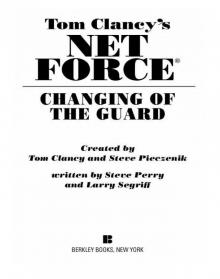 Changing of the Guard
Changing of the Guard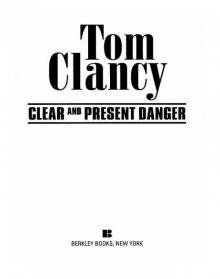 Clear and Present Danger
Clear and Present Danger Hounds of Rome
Hounds of Rome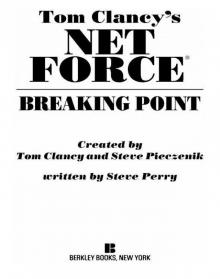 Breaking Point
Breaking Point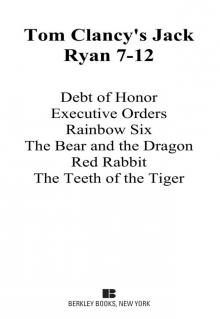 Tom Clancy's Jack Ryan Books 7-12
Tom Clancy's Jack Ryan Books 7-12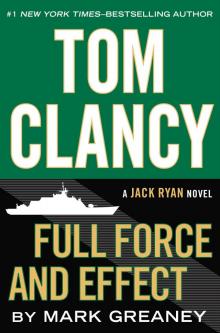 Full Force and Effect
Full Force and Effect The Archimedes Effect
The Archimedes Effect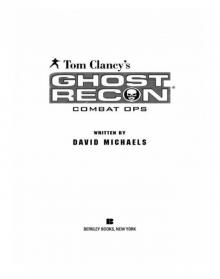 Combat Ops
Combat Ops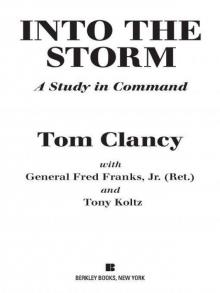 Into the Storm: On the Ground in Iraq
Into the Storm: On the Ground in Iraq Under Fire
Under Fire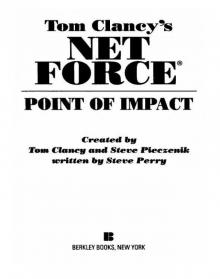 Point of Impact
Point of Impact Red Rabbit
Red Rabbit Rainbow Six
Rainbow Six The Hunt for Red October
The Hunt for Red October The Teeth of the Tiger
The Teeth of the Tiger Conviction (2009)
Conviction (2009)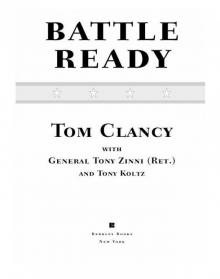 Battle Ready
Battle Ready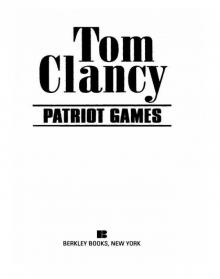 Patriot Games
Patriot Games The Sum of All Fears
The Sum of All Fears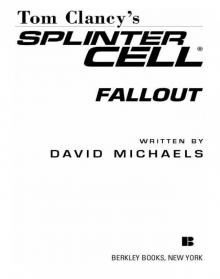 Fallout (2007)
Fallout (2007) Red Storm Rising
Red Storm Rising The Cardinal of the Kremlin
The Cardinal of the Kremlin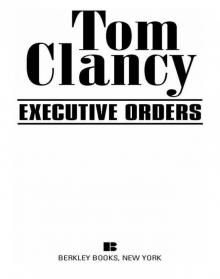 Executive Orders
Executive Orders Lincoln, the unknown
Lincoln, the unknown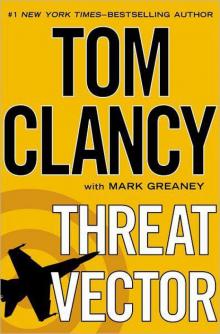 Threat Vector
Threat Vector The Hunted
The Hunted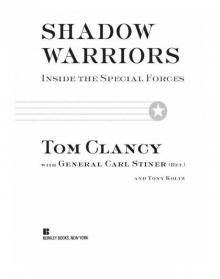 Shadow Warriors: Inside the Special Forces
Shadow Warriors: Inside the Special Forces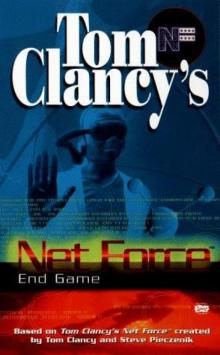 End Game
End Game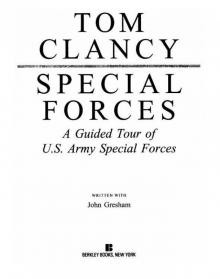 Special Forces: A Guided Tour of U.S. Army Special Forces
Special Forces: A Guided Tour of U.S. Army Special Forces Locked On
Locked On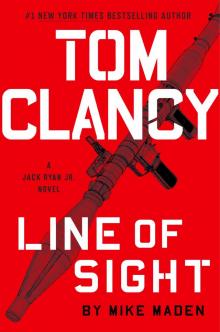 Line of Sight
Line of Sight Tom Clancy Enemy Contact - Mike Maden
Tom Clancy Enemy Contact - Mike Maden Fighter Wing: A Guided Tour of an Air Force Combat Wing
Fighter Wing: A Guided Tour of an Air Force Combat Wing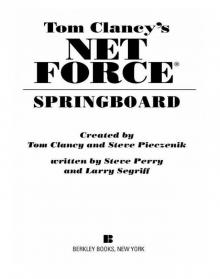 Springboard
Springboard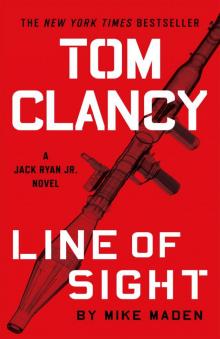 Line of Sight - Mike Maden
Line of Sight - Mike Maden EndWar
EndWar Dead or Alive
Dead or Alive Tom Clancy Support and Defend
Tom Clancy Support and Defend Checkmate
Checkmate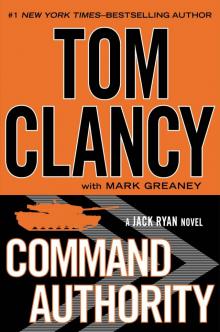 Command Authority
Command Authority Carrier: A Guided Tour of an Aircraft Carrier
Carrier: A Guided Tour of an Aircraft Carrier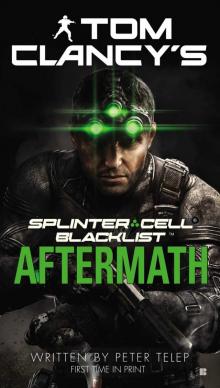 Blacklist Aftermath
Blacklist Aftermath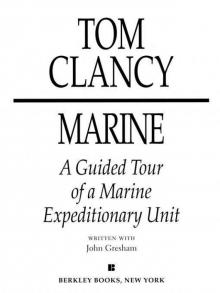 Marine: A Guided Tour of a Marine Expeditionary Unit
Marine: A Guided Tour of a Marine Expeditionary Unit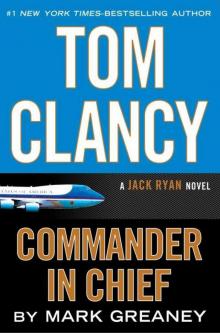 Commander-In-Chief
Commander-In-Chief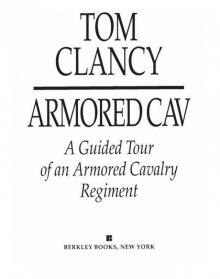 Armored Cav: A Guided Tour of an Armored Cavalry Regiment
Armored Cav: A Guided Tour of an Armored Cavalry Regiment Tom Clancy's Jack Ryan Books 1-6
Tom Clancy's Jack Ryan Books 1-6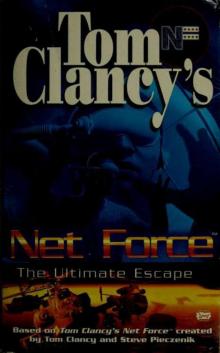 The Ultimate Escape
The Ultimate Escape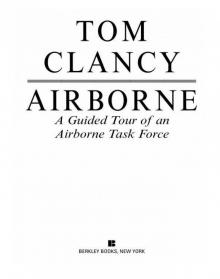 Airborne: A Guided Tour of an Airborne Task Force
Airborne: A Guided Tour of an Airborne Task Force Debt of Honor
Debt of Honor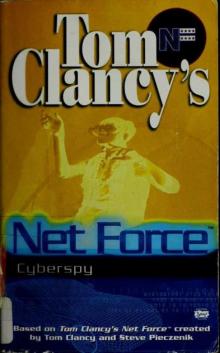 Cyberspy
Cyberspy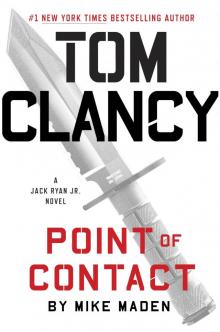 Point of Contact
Point of Contact Operation Barracuda (2005)
Operation Barracuda (2005)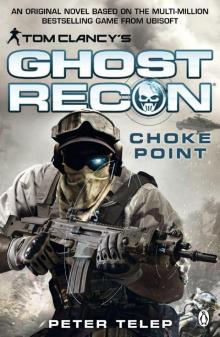 Choke Point
Choke Point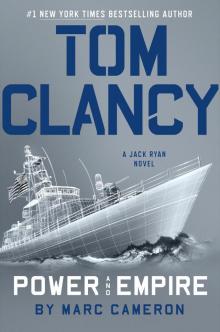 Power and Empire
Power and Empire Every Man a Tiger: The Gulf War Air Campaign
Every Man a Tiger: The Gulf War Air Campaign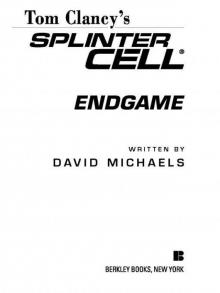 Endgame (1998)
Endgame (1998)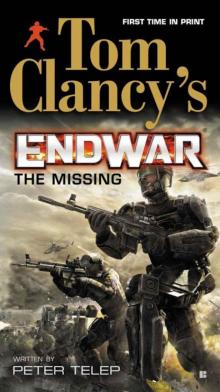 EndWar: The Missing
EndWar: The Missing Splinter Cell (2004)
Splinter Cell (2004) The Great Race
The Great Race True Faith and Allegiance
True Faith and Allegiance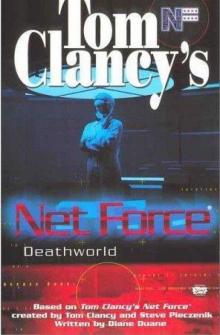 Deathworld
Deathworld Ghost Recon (2008)
Ghost Recon (2008)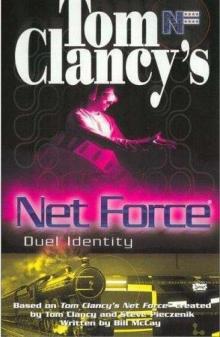 Duel Identity
Duel Identity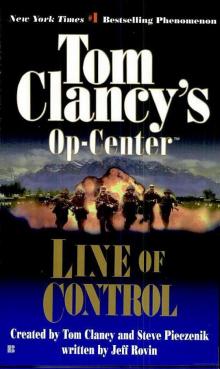 Line of Control o-8
Line of Control o-8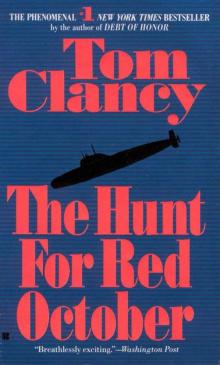 The Hunt for Red October jr-3
The Hunt for Red October jr-3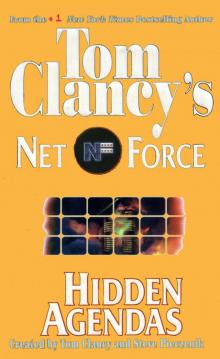 Hidden Agendas nf-2
Hidden Agendas nf-2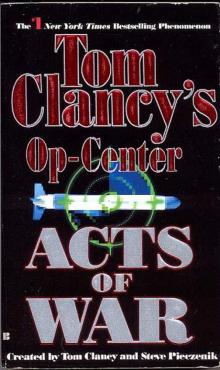 Acts of War oc-4
Acts of War oc-4 Ruthless.Com pp-2
Ruthless.Com pp-2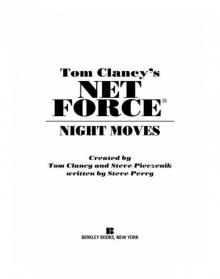 Night Moves
Night Moves The Hounds of Rome - Mystery of a Fugitive Priest
The Hounds of Rome - Mystery of a Fugitive Priest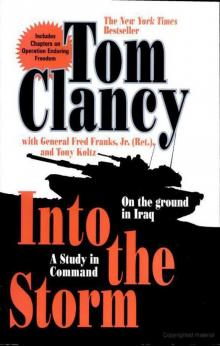 Into the Storm: On the Ground in Iraq sic-1
Into the Storm: On the Ground in Iraq sic-1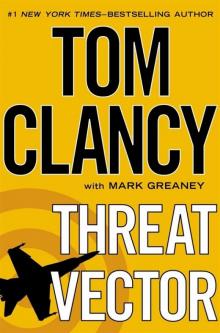 Threat Vector jrj-4
Threat Vector jrj-4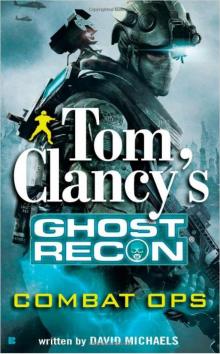 Combat Ops gr-2
Combat Ops gr-2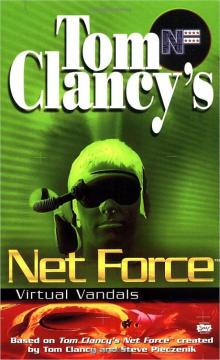 Virtual Vandals nfe-1
Virtual Vandals nfe-1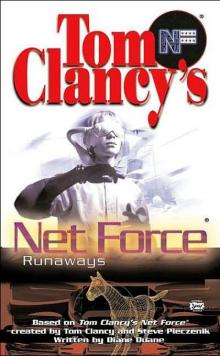 Runaways nfe-16
Runaways nfe-16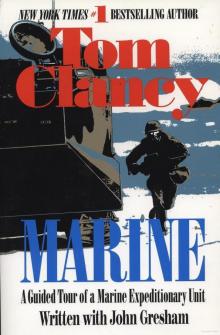 Marine: A Guided Tour of a Marine Expeditionary Unit tcml-4
Marine: A Guided Tour of a Marine Expeditionary Unit tcml-4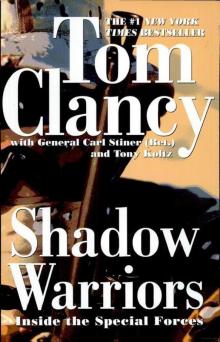 Shadow Warriors: Inside the Special Forces sic-3
Shadow Warriors: Inside the Special Forces sic-3 Jack Ryan Books 1-6
Jack Ryan Books 1-6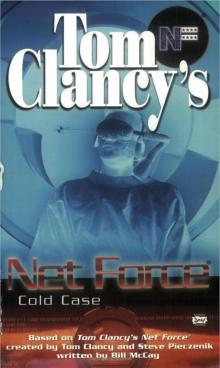 Cold Case nfe-15
Cold Case nfe-15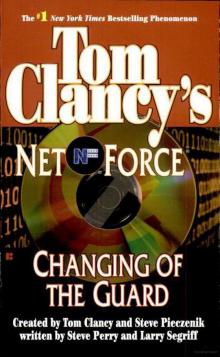 Changing of the Guard nf-8
Changing of the Guard nf-8 Splinter Cell sc-1
Splinter Cell sc-1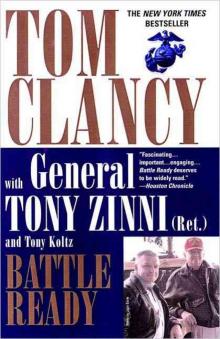 Battle Ready sic-4
Battle Ready sic-4 The Bear and the Dragon jrao-11
The Bear and the Dragon jrao-11 Fighter Wing: A Guided Tour of an Air Force Combat Wing tcml-3
Fighter Wing: A Guided Tour of an Air Force Combat Wing tcml-3 Patriot Games jr-1
Patriot Games jr-1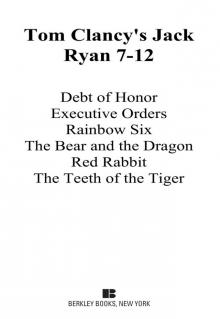 Jack Ryan Books 7-12
Jack Ryan Books 7-12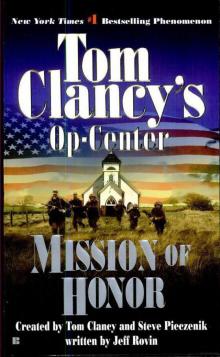 Mission of Honor o-9
Mission of Honor o-9 Private Lives nfe-9
Private Lives nfe-9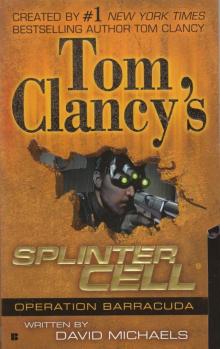 Operation Barracuda sc-2
Operation Barracuda sc-2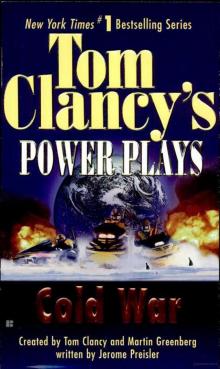 Cold War pp-5
Cold War pp-5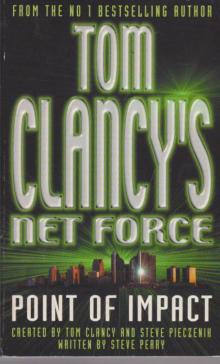 Point of Impact nf-5
Point of Impact nf-5 Red Rabbit jr-9
Red Rabbit jr-9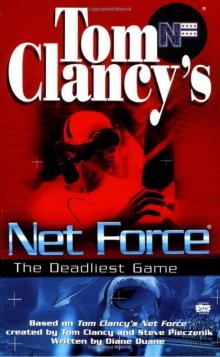 The Deadliest Game nfe-2
The Deadliest Game nfe-2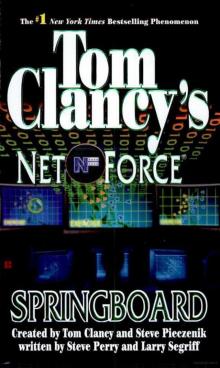 Springboard nf-9
Springboard nf-9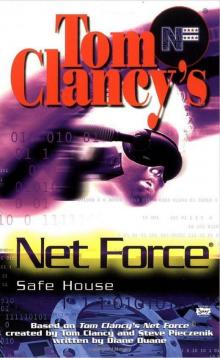 Safe House nfe-10
Safe House nfe-10 EndWar e-1
EndWar e-1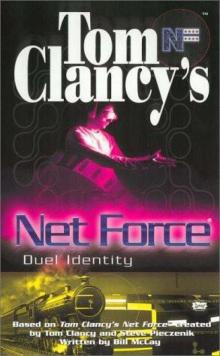 Duel Identity nfe-12
Duel Identity nfe-12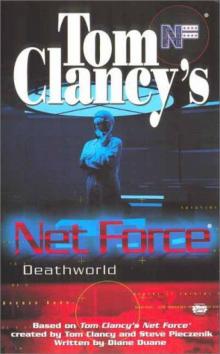 Deathworld nfe-13
Deathworld nfe-13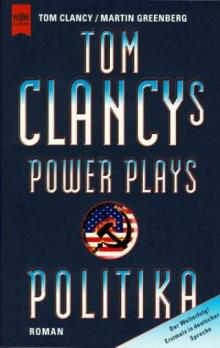 Politika pp-1
Politika pp-1 Rainbow Six jr-9
Rainbow Six jr-9 Tom Clancy's Power Plays 1 - 4
Tom Clancy's Power Plays 1 - 4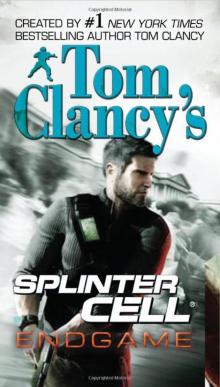 Endgame sc-6
Endgame sc-6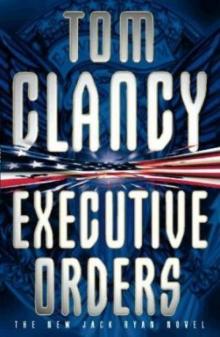 Executive Orders jr-7
Executive Orders jr-7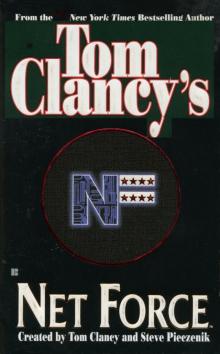 Net Force nf-1
Net Force nf-1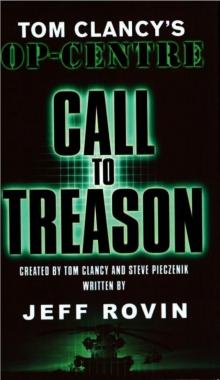 Call to Treason o-11
Call to Treason o-11 Locked On jrj-3
Locked On jrj-3 Against All Enemies
Against All Enemies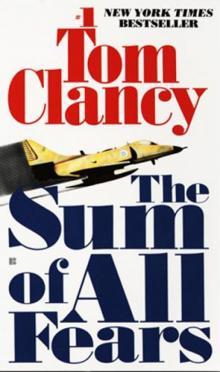 The Sum of All Fears jr-7
The Sum of All Fears jr-7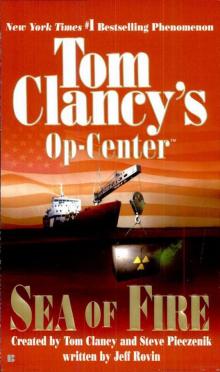 Sea of Fire o-10
Sea of Fire o-10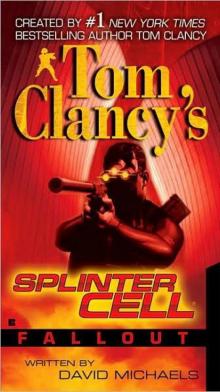 Fallout sc-4
Fallout sc-4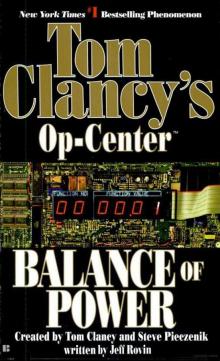 Balance of Power o-5
Balance of Power o-5 Shadow Watch pp-3
Shadow Watch pp-3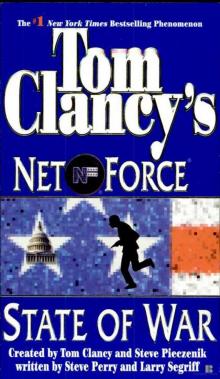 State of War nf-7
State of War nf-7 Wild Card pp-8
Wild Card pp-8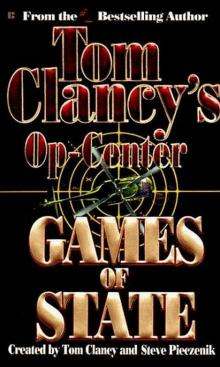 Games of State o-3
Games of State o-3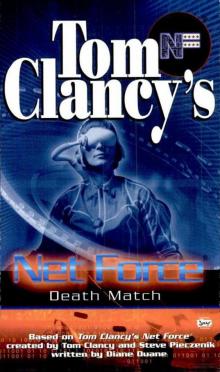 Death Match nfe-18
Death Match nfe-18 Against All Enemies mm-1
Against All Enemies mm-1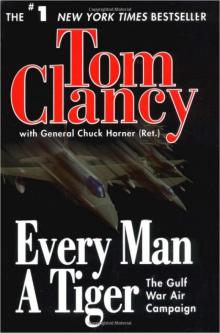 Every Man a Tiger: The Gulf War Air Campaign sic-2
Every Man a Tiger: The Gulf War Air Campaign sic-2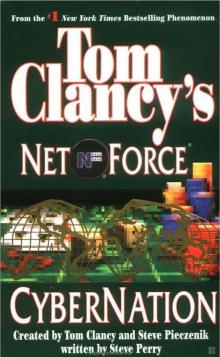 Cybernation nf-6
Cybernation nf-6 Support and Defend
Support and Defend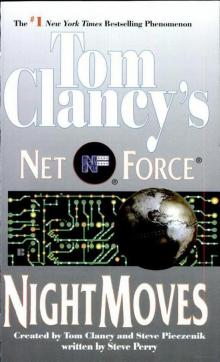 Night Moves nf-3
Night Moves nf-3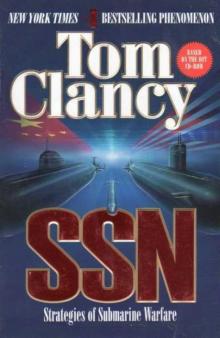 SSN
SSN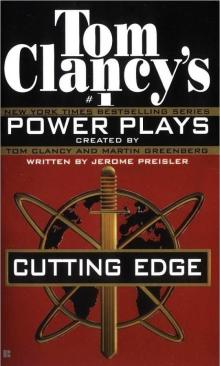 Cutting Edge pp-6
Cutting Edge pp-6 The Cardinal of the Kremlin jrao-5
The Cardinal of the Kremlin jrao-5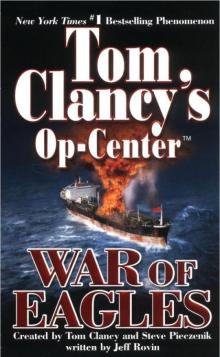 War of Eagles o-12
War of Eagles o-12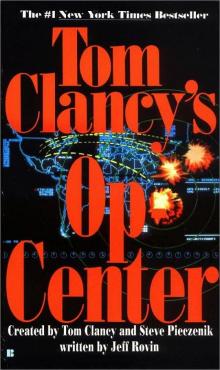 Op-Center o-1
Op-Center o-1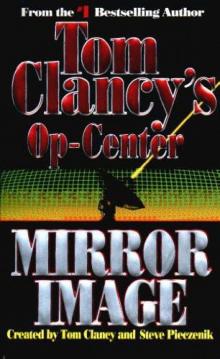 Mirror Image o-2
Mirror Image o-2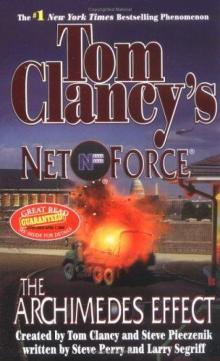 The Archimedes Effect nf-10
The Archimedes Effect nf-10 Teeth of the Tiger jrj-1
Teeth of the Tiger jrj-1 Bio-Strike pp-4
Bio-Strike pp-4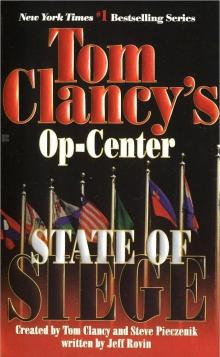 State of Siege o-6
State of Siege o-6 Debt of Honor jr-6
Debt of Honor jr-6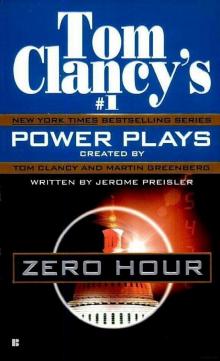 Zero Hour pp-7
Zero Hour pp-7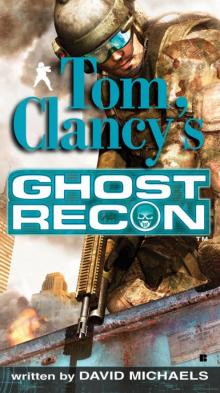 Ghost Recon gr-1
Ghost Recon gr-1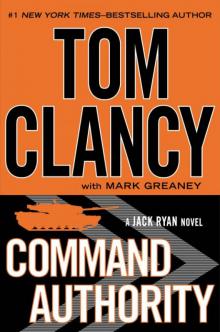 Command Authority jr-10
Command Authority jr-10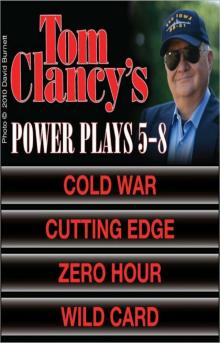 Tom Clancy's Power Plays 5 - 8
Tom Clancy's Power Plays 5 - 8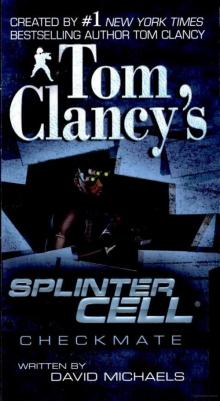 Checkmate sc-3
Checkmate sc-3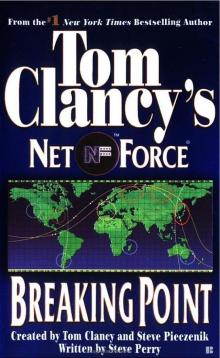 Breaking Point nf-4
Breaking Point nf-4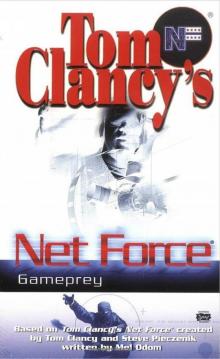 Gameprey nfe-11
Gameprey nfe-11 The Hunted e-2
The Hunted e-2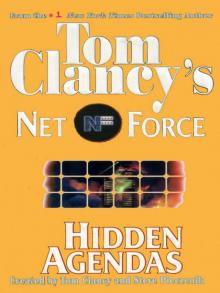 Hidden Agendas
Hidden Agendas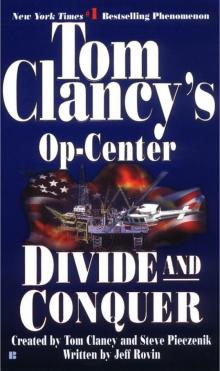 Divide and Conquer o-7
Divide and Conquer o-7